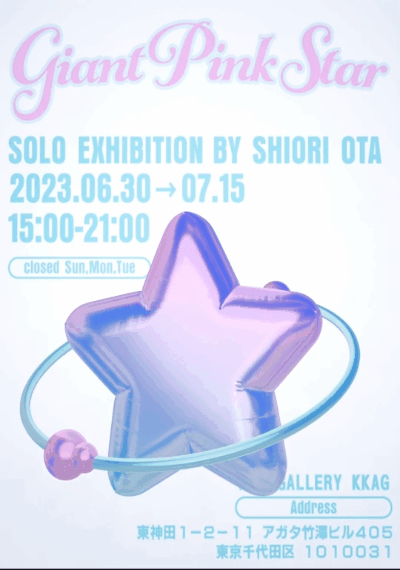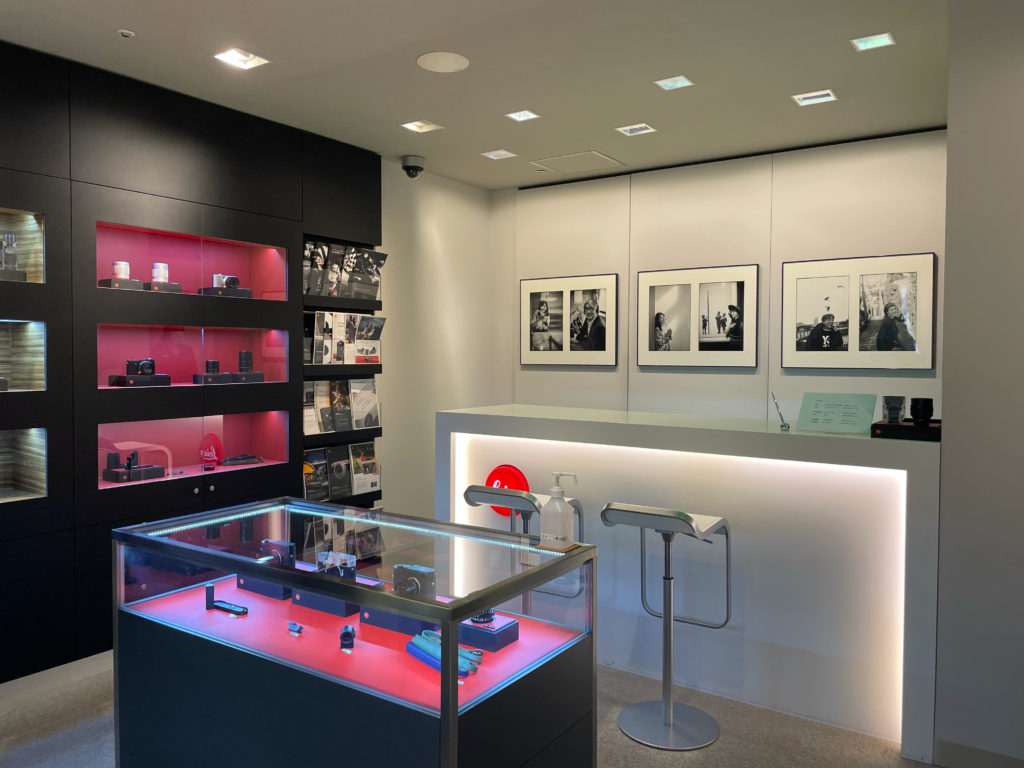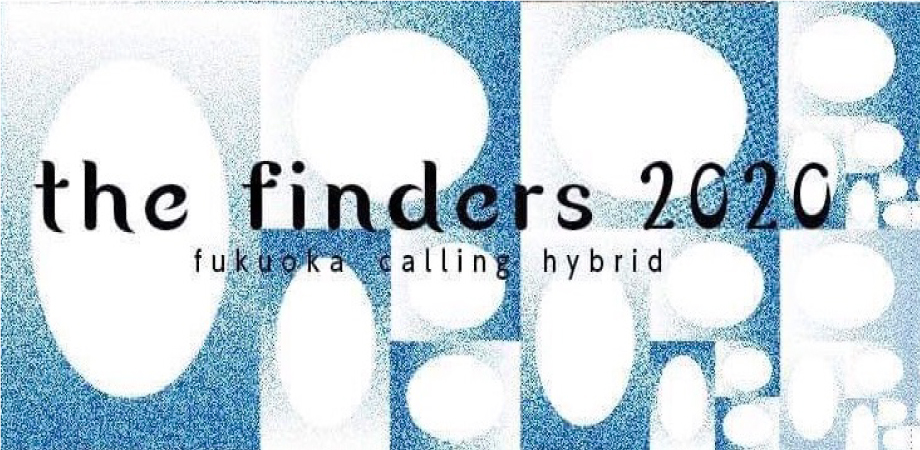1限目は、鶴田正人による『 アートがある台所』をテーマに、福岡アジアアートウィークで好評だった画家のアート作品を紹介。
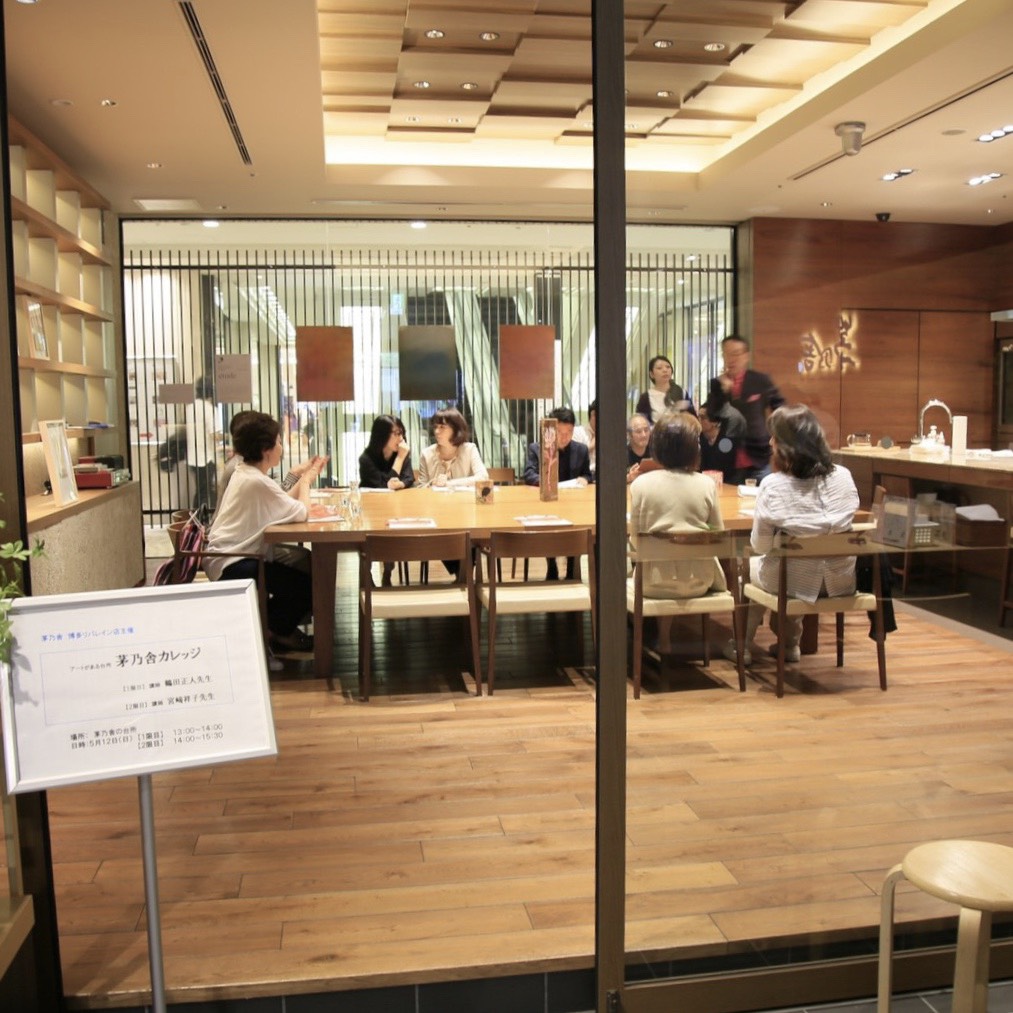
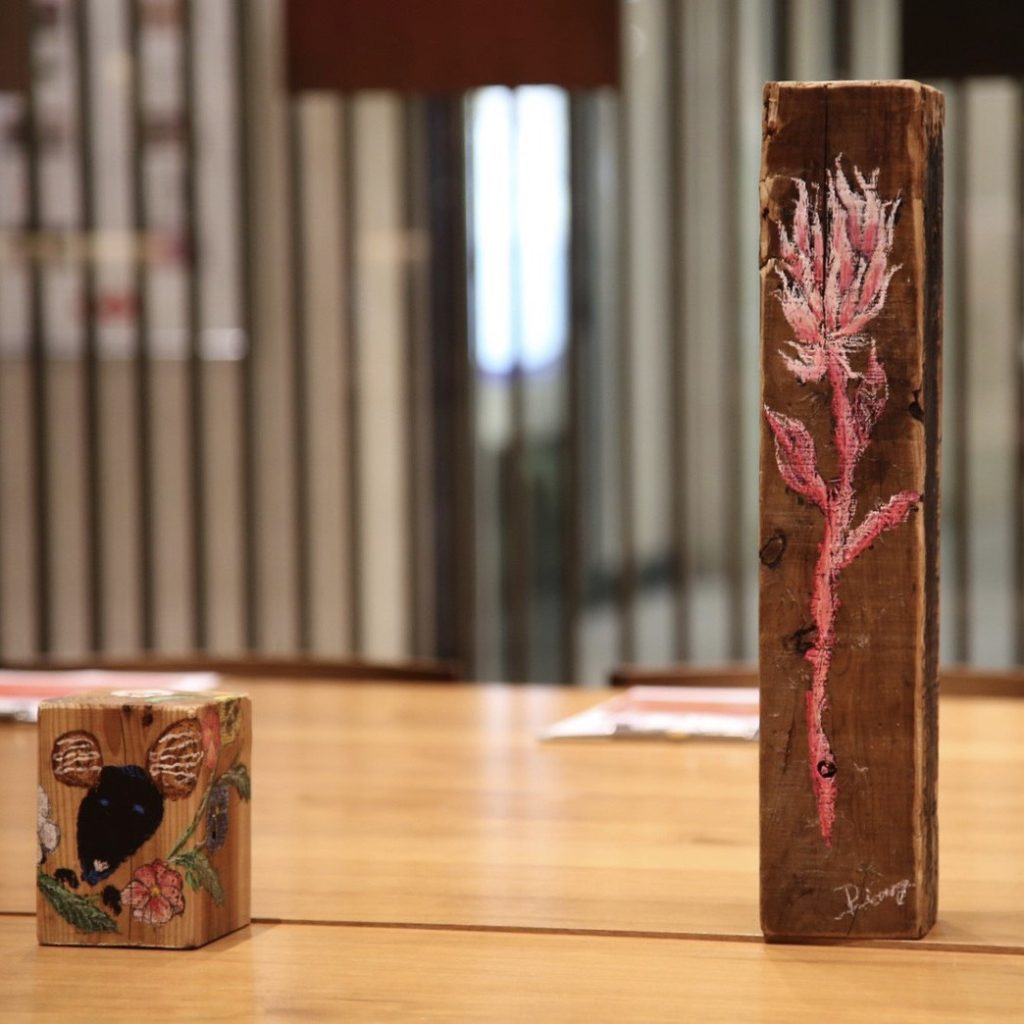
テーブルの中心に置かれている2点のチョークアート作品。これは山脇りなさんの作品で、廃材を使って作られている。福岡アジア美術館でも展示され、注目を集めていた。
山脇さんはオーストラリアの語学学校へ留学。サーフィンを趣味としていたが、行ったカフェに飾られていたチョークボード作品に興味を持つ。それからアートの道へと進んでいった。
チョークアートの作品は、どこにでも飾ることができる。それこそ台所にも。
題材が動物や植物なので、カフェやレストランに置いてありそうな感じだ。
実際に、山脇さんの地元である長崎には、作品が飾られているカフェもあるので、そこでも作品を見ることが出来るそうだ。
そして次に、自作のパステルをもとに制作をしている桑園創。パステルは、顔料と土を混ぜて作られている。
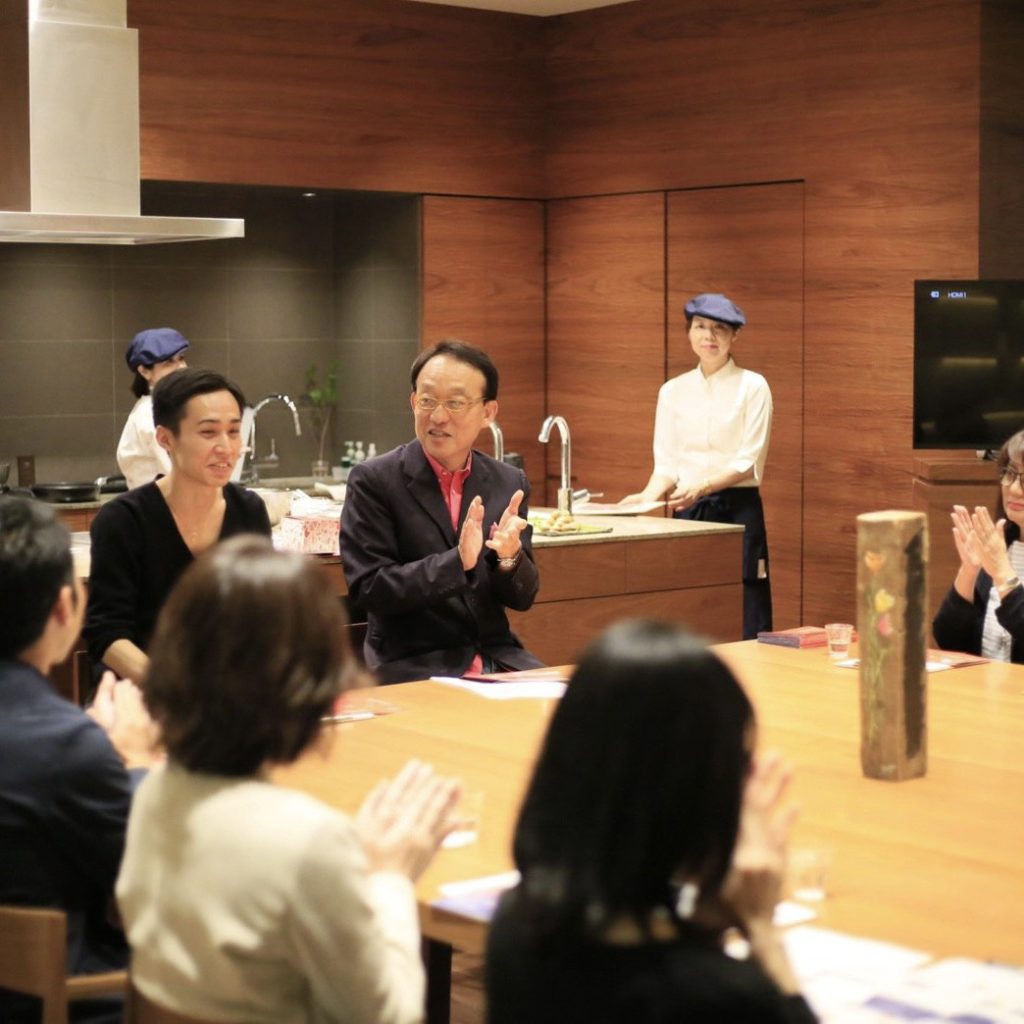
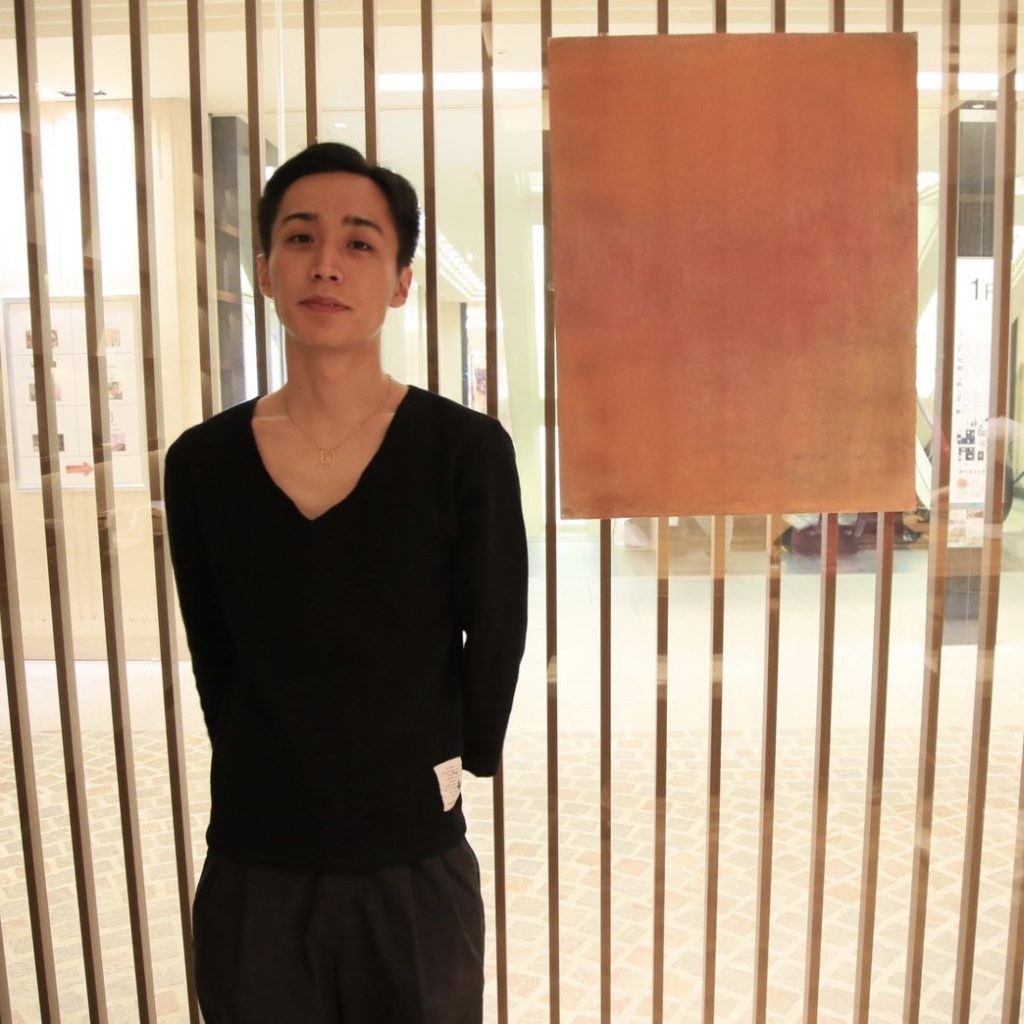
壁側に貼ってあった作品の制作秘話を聞くことができた。この作品は3、4年前のシリーズ。桑園さんは、以前はポートレートなどの人物画を制作していた。
迷走し、気分が下がっている時期に友達から「紙に書いたら?」と言われて時間を埋めるようにパステル画を始めたという。
何を書いているというわけでもなく、色を落としていく感覚。初心に帰って挑戦したそうだ。
そうして制作を進めていく中で、もっとこうしたいという思いや動きが出て、自分とのやり取りを行う。その中で生まれた作品だという。
パステルは、MBMというフランスの紙を使用しており、パステル画を選んだ理由として、絵の具と違ってかたまらないので、色を動かし続ける事ができるという点が一番の理由となっている。
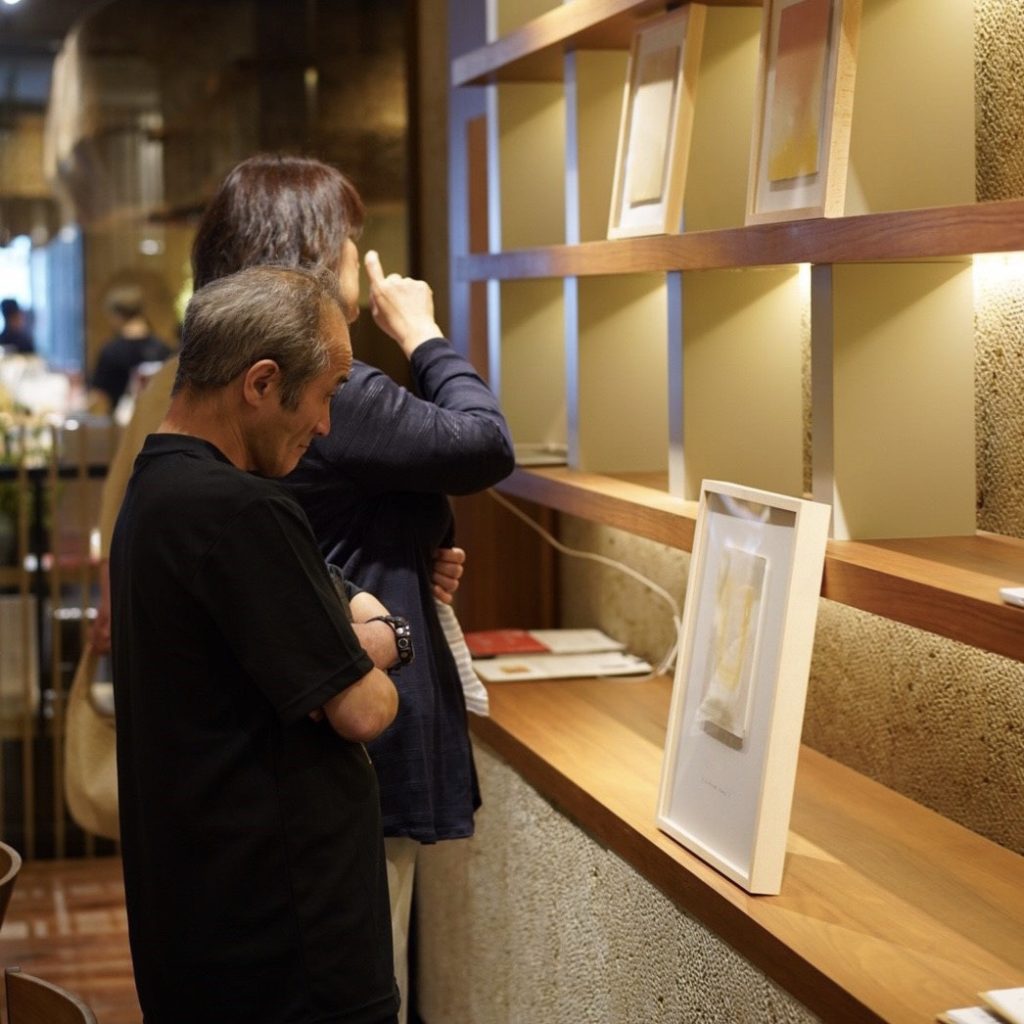
額縁に入っている3点の作品は今回のイベントの為の書き下ろし。パステルを派生し、ピンク色がメインとなっている作品は京都の土を使っているそうだ。
京都での学生時代には、イスラエル料理でアルバイトをしていたという桑園さん。オーガニック系の料理が多いそのお店で、スパイスも自ら挽いていたそうだ。その際に見つけた自然の色からも、インスパイアを受けていたという。
“Waiting” by Hajime Kuwazono & Yushi Dangami
大学を卒業し、福岡で活動する若い作家をどう育てていくか、これが課題となる。アートは株よりも価値があり、投資としての価値や楽しみ方があると最後に鶴田正人が語る。
そして2限目に、宮崎祥子さんによるスイーツのデモンストレーション。茅乃舎の調味料とコラボしたスイーツの紹介。
今回は「味噌丸・醤油丸 茅乃舎生七味を添えて」、「テリーヌショコラの金柑添え」の2品。
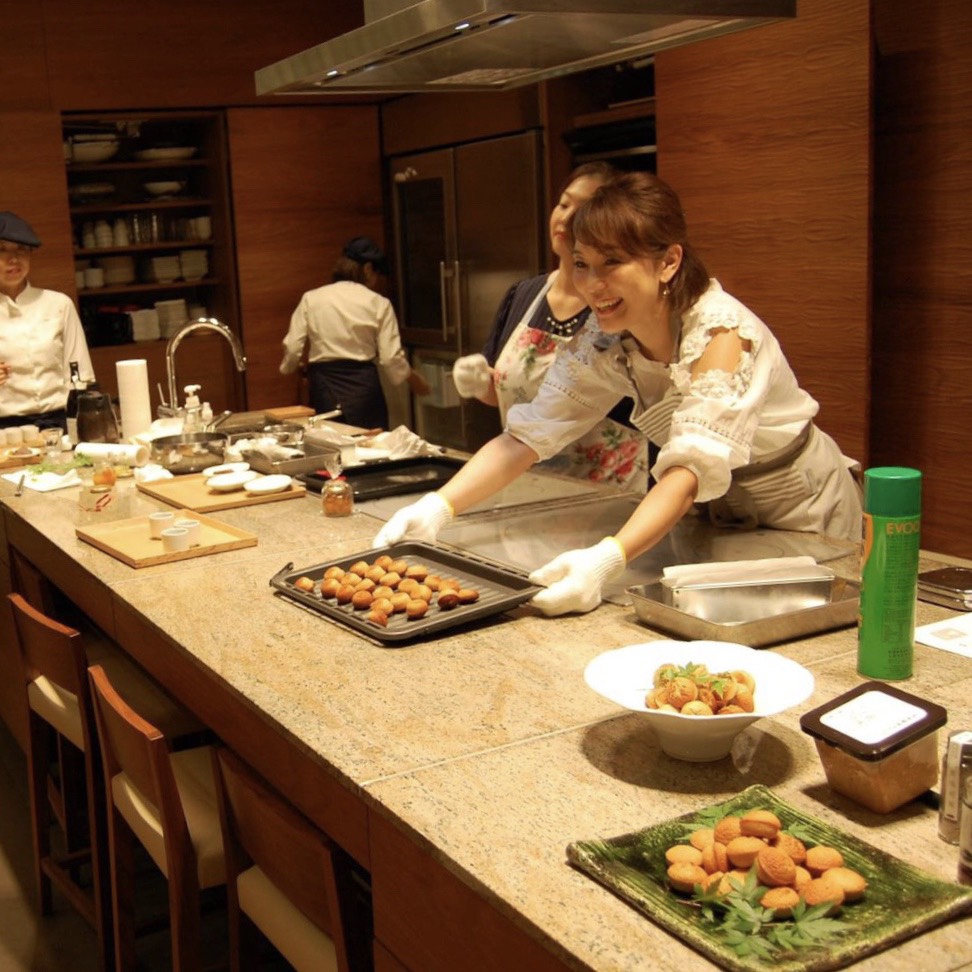
味噌丸は茅乃舎十穀味噌、醤油丸には茅乃舎卵かけ醤油が使われており、完成したものに茅乃舎の生七味を付けて食べる。
こんがり焼けたフィナンシェは外側がカリカリ。醤油と味噌の香りが漂う新しい感覚のスイーツだった。
テリーヌショコラの金柑添えには、テリーヌの材料で純米大吟醸久波良という日本酒を使用。お酒好きにはたまらない、そんなスイーツだ。
バリエーションとして、好みで焼く際に洋酒につけてあるドライフルーツを散らすのも良いと宮崎先生は言う。
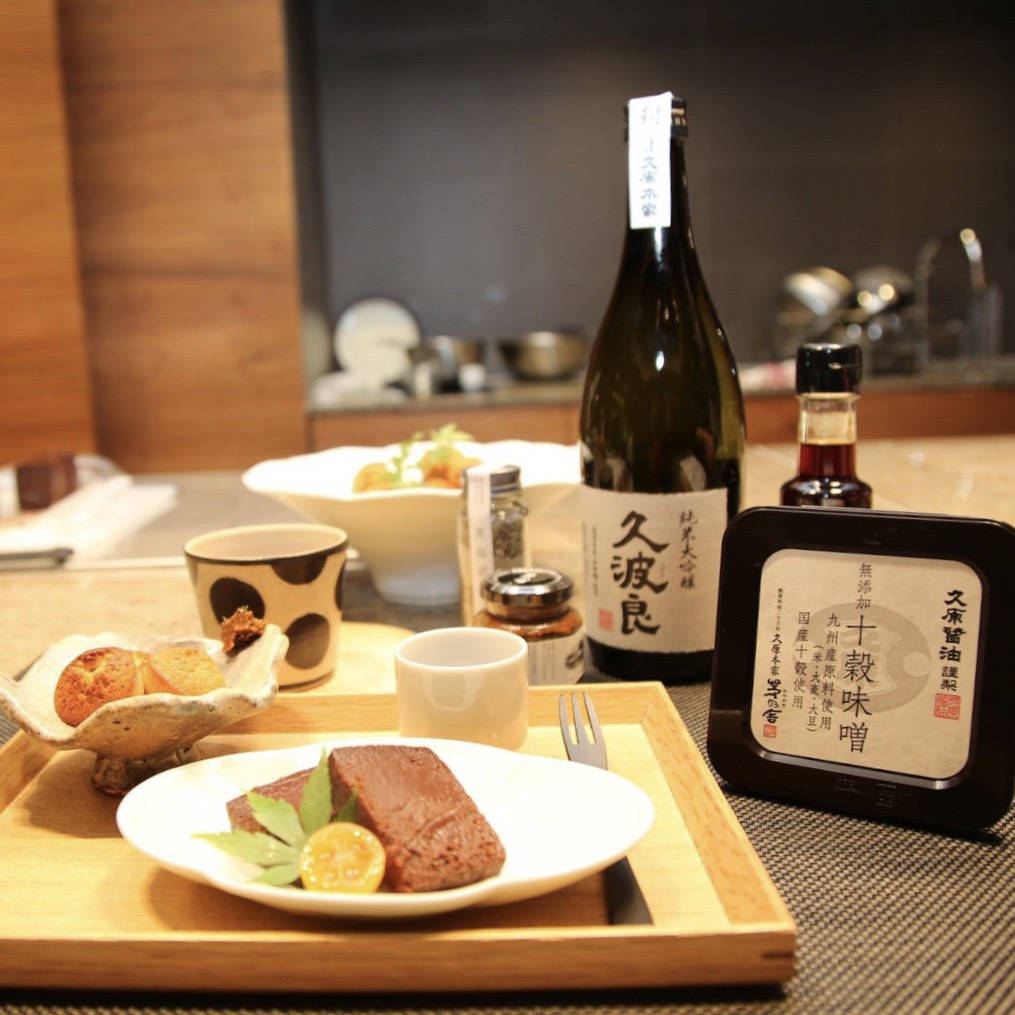
おいしい茅乃舎コラボレーションスイーツと、日本酒を頂きながらアートを鑑賞するプライベートスクール。
アートとスイーツ、意外な交わりが新しい交流や発想を生み出し、素敵な空間を生み出していた。
■茅乃舎カレッジ
2019年5月12日、茅乃舎 博多リバレイン店にて開催された。
住所: 〒812ー0027 福岡県福岡市博多区下川端町3ー1 博多リバレインモール1F 茅乃舎の台所
Knowing high-qualified beauties and traditional technique, “Kayanoya college” has started this spring to acquire special cuisine and an elegant life style.
For the first event on May 12th, themed “the kitchen with art”, some art pieces and collaborated sweets were introduced.
At the first period, Masato Tsuruta introduced the art works by the painter who gained good reviews during Fukuoka Asia Art Week last February.


The two chalk art displayed in the center of table are created by Rina Yamawaki, using scrap wood.
She studied English in Australia and enjoyed surfing there, but she happened to get interested in a chalk art board in a café. That’s how she started to dive into the world of art.
The chalk art can be displayed anywhere as well as in a kitchen, of course.
She mainly pints animals and plant, so they’re definitely suitable to cafes and restaurants.
In Nagasaki, her home town, there’s a café where you can see her work.
The next artist is Hajime Kuwazono, painting with his own created pastels. He makes pastels by mixing pigment and soil.


He told us the story behind making a piece on the wall. This is one of the series three or four years ago. Before that he was mainly working on portraits.
When he became inconsistent and couldn’t decide what to do, a friend of him mentioned about drawing on paper, and he started pastels as he spent the time.There was no theme or aims, but he just put colours on paper, as resetting himself.
During the creation, he finally found his intentional feelings and moves, and talked deeply to himself.
He uses paper called MBM from France, and he’s fascinated by the fluency of pastels, not like paints which will be solid after a while.

Three pieces in the frame are especially painted for this event. From the pastels, for the work featuring pink, he used the solid of Kyoto.
He used to work for an Israeli restaurant when he was a student in Kyoto. He’s inspired by the earth colours of spices he grinded during his part-time job.
“Waiting” by Hajime Kuwazono & Yushi Dangami
It’s still a problem to find how to support new artists in Fukuoka after they graduate. Art is more valuable than stocks and you can enjoy it to invest in, as Tsuruta said.
For the second period, Shoko Miyazaki demonstrated sweets collaborated with seasonings of Kayanoya.
There were two dishes, “Miso-maru, Shoyu-maru with the spice of Kayanoya” and “chocolate terrine with a small orange”.

She used Kayanoya Jyukkoku-miso for miso-maru, and Kayanoya Tamagokake-Shoyu for shoyu-maru, and they enjoyed them with red pepper. A well-baked financier was a new type sweet tasting and smelling of miso and soy sauce.

This private school ended with the tasty sweet and Japanese sake, surrounded by art works.
The unexpected collaboration of art and sweet encouraged new interchange and imagination.
